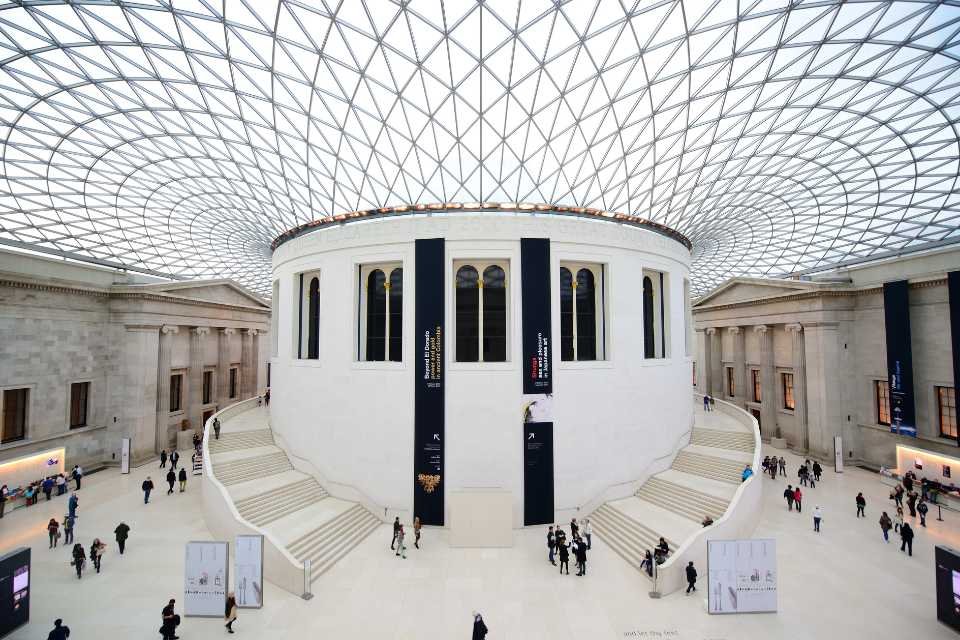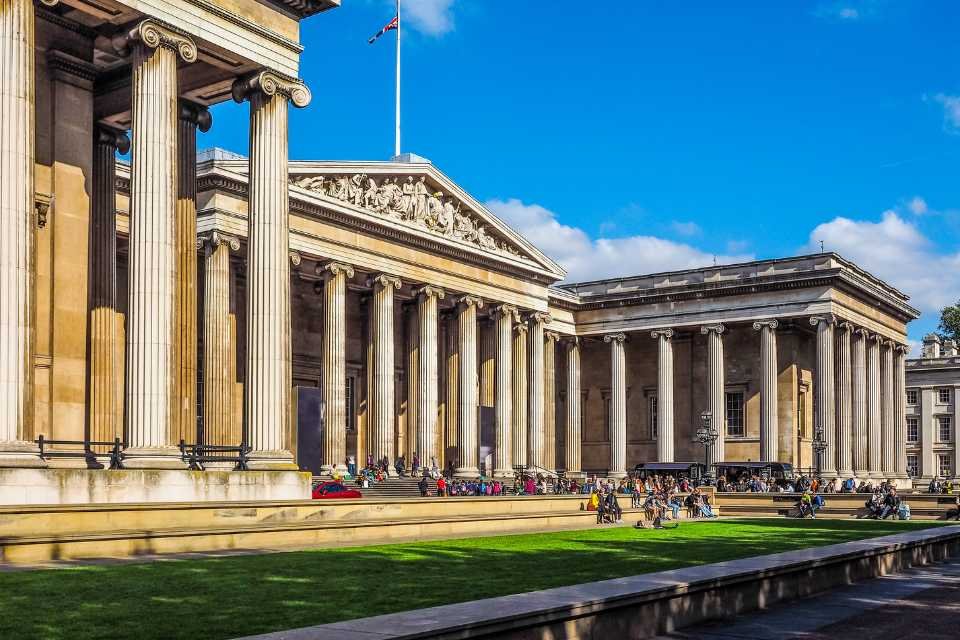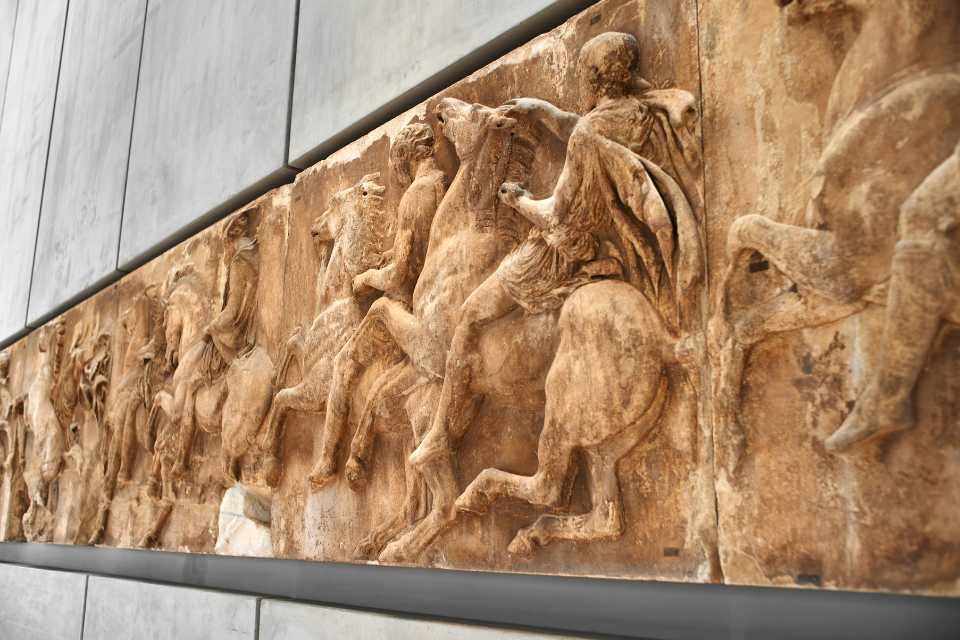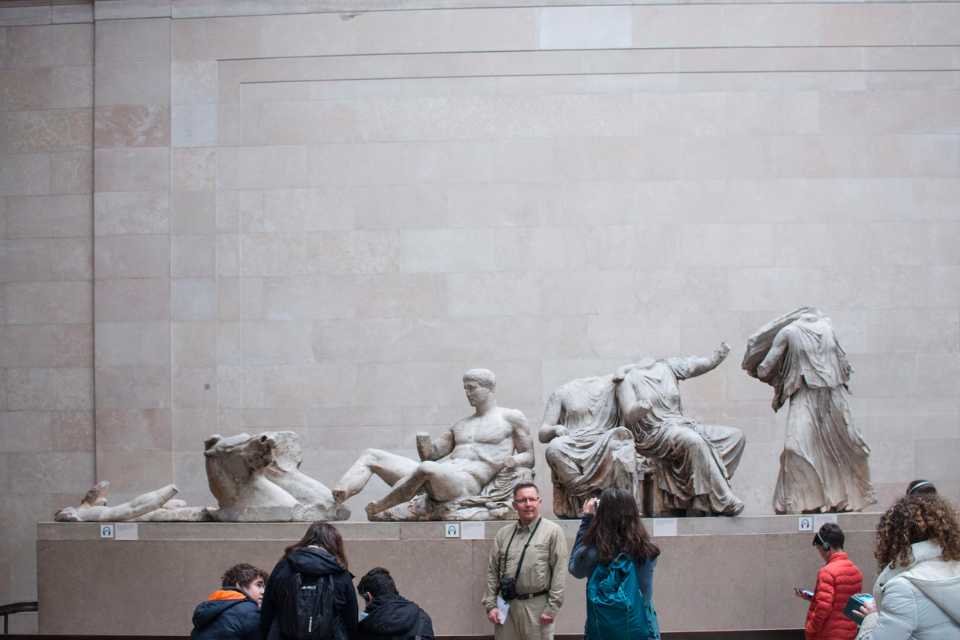The British Museum travel guide
Everything you need to know before visiting this incredible Museum in London
Are you planning a trip to the world-famous British Museum in London? If so, you're in for an unforgettable experience! This British Museum travel guide will help you make the most of your visit.
Here, we'll provide important information and interesting facts about the British Museum, as well as a brief history of the museum.
We'll also provide tips on how to get the most out of your trip. With this guide, you'll be able to plan an amazing visit to the British Museum. So let's get started!
About the British Museum
The British Museum in London is one of the world’s most famous museums. Founded in 1753, it was the first national public museum in the world. With a permanent collection of 8 million works, it is now one of the largest and most comprehensive collections in existence.
The British Museum began as a ‘cabinet of curiosities’. It was founded by a group of British citizens who wanted to create a collection that would provide knowledge and enjoyment to all members of society. Initially, they collected objects from across the world and displayed them in a private house. However, as the collection grew, it became clear that a larger space was needed.
In 1759, Montagu House was selected for the purpose of housing the growing collection. This building later became known as the Old British Museum. It remained the home of the British Museum until its move to Bloomsbury in 1850s, when Sir Robert Smirke's neo-classical building finally opened to the public.
Today, the British Museum houses some of the world’s most impressive works, spanning thousands of years and numerous cultures. The Great Court, completed in 2000, is one of London’s most popular attractions. It has become a destination for art lovers, history buffs and curious travelers alike. Visitors can explore hundreds of galleries, ranging from ancient Egyptian mummies to modern art.
Location and Getting There
The British Museum is located in the heart of London, and is one of the most popular attractions for visitors to the city. Situated in Bloomsbury, the museum is easily accessible from many public transport options. The nearest tube station is Tottenham Court Road, which is just a few minutes away from the museum. Alternatively, visitors can take a bus from many stops across the city, including Oxford Circus and Trafalgar Square. The museum is also close to some of London’s other top attractions, such as Oxford Street and the West End.
The British Museum has been welcoming visitors since 1753 and is now one of the most popular museums in London. As part of the iconic London skyline, the British Museum is easily recognised by its distinctive columns and grand entrance. Once inside, visitors can explore its vast collections and fascinating exhibitions.
Opening Hours and Admission Prices
The British Museum in London is one of the most popular tourist attractions in the city and an absolute must-see for any traveler. The museum is open seven days a week and has varying opening hours depending on the time of year. Generally, it is open from 10am to 5:30pm on weekdays and Saturday and Sunday and 10am to 8:30pm on Fridays.
Admission to the British Museum is free, making it a great option if you’re looking for budget-friendly activities to enjoy while in London. For special exhibitions, there may be an additional charge; however, all other displays within the museum are completely free.
What to See
The British Museum in London is a must-see for any visitor to the city. This world-famous museum houses more than 8 million artifacts from all over the world, including ancient Egypt, Greece and Rome, Africa, Asia, and the Americas. The collections are so vast that it would take days to explore them all.
When visiting the British Museum, start your journey by exploring the Great Court. Here you can marvel at the Reading Room, originally used by the British Library, and take in stunning views of the surrounding area. Don’t miss the East Wing, which contains many of the museum’s most famous artifacts, such as the Rosetta Stone and Parthenon sculptures.
Other must-see attractions include the Egyptian Sculpture Gallery, which holds one of the finest collections of Egyptian artifacts outside of Cairo; the Middle Eastern Galleries, which display an array of ancient artifacts from Iran, Iraq, Turkey and other parts of the Middle East; and the Prints & Drawings Gallery, which houses a remarkable collection of prints, drawings, and photographs.
Beyond these galleries and collections, you can also take part in educational activities such as lectures and workshops or explore the museum's digital resources. If you are looking for more things to do while in London, the British Museum is part of a larger network of museums in the capital and is within easy reach of some of the city's other famous attractions.
British Museum guided tours
One of the best ways to get a fresh angle on all of the amazing exhibits at the British Museum is with a guided tour. In the hands of a capable expert, you’ll see the most important artefacts and hear stories, background info and dive into historic moments. Book a guided tour if you want to go further than the commentary cards or audio guides will ever stretch.
Must-see exhibits at the British Museum
Parthenon Marbles
You can't visit the British Museum and not see the Parthenon Marbles.
Originally affixed to the Parthenon on the Acropolis of Athens between 447 and 438 B.C., these breathtaking friezes and sculptures are now in private collections around the world.
As a symbol of Athens's glory days, the Parthenon was built to inspire awe and admiration. Phidias, the greatest ancient sculptor, carved these sculptures that shed light on ancient Athens.
Mausoleum of Halicarnassus
The tomb of King Maussollos and Queen Maussolene at Halicarnassus is widely considered to be one of the greatest architectural achievements of all time. Bodrum, Turkey is now home to its ruined remains.
The word "mausoleum," meaning "above-ground structure for burial or entombment," originated from this famous tomb.
In antiquity, the Mausoleum was considered one of the Seven Wonders of the World. A total of 139 feet in height, the building was adorned lavishly with sculpture carved both in the round and in relief.
Sutton Hoo ship burial
Amazing royal treasures were unearthed in an Anglo-Saxon ship from the sixth century, discovered in 1937. Gold jewellery, Byzantine silverware, a magnificent casket, and an iron helmet were just some of the artefacts that were found on board the 88.5-foot-long ship, an archaeologist's dream. Perhaps an Anglo-Saxon king was buried there.
Hoa Hakananai’a
The massive statue is a crowd-pleaser at the museum. This comes all the way from Chile's off-the-beaten-path Easter Island.
The Rapa Nui people gave the name Hoa Hakanani'a to this person. It's meaning is "secret pal." These statues, known as moai, were built with their backs to the ocean.
A human head and torso are depicted in the statue, but the arms appear to have been disproportionately reduced in size. Intricate carvings depicting the island's Birdman cult adorn its back.
Rosetta Stones
The Rosetta Stone is a must-see for any visitor to the British Museum. It is one of the most well-known rocks in the world and one of the museum's most prized possessions.
Its importance in unlocking the secrets of ancient Egyptian has made it famous around the globe. As a result, it altered how scholars view the ancient world.
A group of soldiers were laying the groundwork for a new fort in the town of Rosetta on 15 July 1799 when they came across the stone. There was no doubt that this ancient artefact was priceless.
Busts Of Roman Emperors
The sculptures of ancient Greece are not limited to the Parthenon sculptures.
An impressive collection of busts of Roman emperors can be found in the museum. Contrasted with the Capitoline Museums in Rome, it holds its own.
The busts are an amazing insight into what the Romans actually looked like, and the detail and effort that went into capturing their likeness.
Egyptian Mummies
The Egyptian Collection at the British Museum spans the ancient civilization from the Neolithic period to the early Christian era.
The ancient Egyptians placed a high value on the concepts of afterlife and death.
There are many Egyptian mummies, coffins, and funerary masks on display at the museum.
The Egyptians mummified their dead to ensure they would have a prosperous afterlife. The bandages were applied tightly, and internal organs were removed.
Tips for Visiting
Plan your visit in advance. Familiarise yourself with the British Museum's floor plans and exhibitions to make the most of your time there
Consider a British Museum guided tour to get insights from an expert tour guide
Bring a camera or phone to capture some memorable photos of the museum and its artefacts.
Consider investing in a guidebook about the British Museum. You can find plenty of books about the museum’s history, exhibits, and important facts.
Get there early as the British Museum can get quite crowded during peak times.
Visit one of the museums many cafes for lunch or dinner. It's a great way to experience more of the museum atmosphere and refuel.
Don't forget to explore some of the other amazing museums in London while you're there. The Science Museum, National Gallery and Tate Modern are all nearby and great places to spend an afternoon.
If you'd rather save some money, you can visit the British Museum for free. Many of the permanent collections are open to the public without admission fees.
More things to do near the British Museum
No trip to London is complete without a visit to the British Museum! But, after exploring the vast collection of historical artifacts and ancient cultures, there’s plenty more to see and do in the area.
If you’re looking for other museums in London, the nearby Wellcome Collection is a must-see. Located on Euston Road, just a few minutes from the British Museum, the Wellcome Collection focuses on medical science and history. Visitors can explore topics such as anatomy, mental health and medical ethics through interactive exhibits.
For something entirely different, check out the Cartoon Museum. Founded in 2006 and located in central London, it celebrates British cartoons, caricatures and comic strips. It’s just a short walk from the British Museum, making it an ideal place to stop off afterwards.
Finally, if you have time, make sure to pay a visit to Russell Square Gardens. This beautiful park is just a stone’s throw from the British Museum, and is perfect for a sunny day stroll. It boasts a large fountain, flowerbeds and plenty of benches for picnicking or people-watching.
The British Museum may be one of London’s biggest attractions but there are plenty of other great sights nearby. With a little bit of exploring, you’re sure to find something else to keep you entertained.
Is the British Museum free to enter?
Entry to the British Museum is completely free, but visitors can make a donation to help with the preservation and upkeep of the museum and its treasures and artefacts.
The British Museum is not the only free museum in London – there are several other renowned museums that are also free to enter, including the Natural History Museum, the Science Museum, and the Victoria and Albert Museum. These museums contain vast collections of artifacts from around the world and offer visitors interesting insights into different cultures and time periods.












